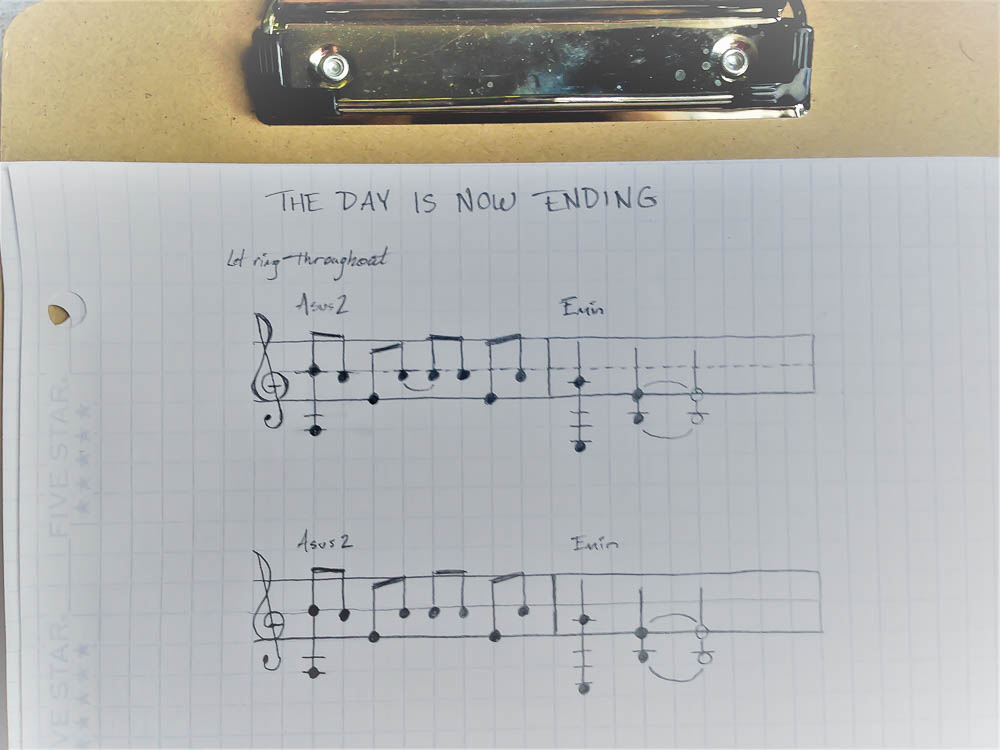
In a pinch, you can improvise sheet music staves on graph paper or dot paper.
I’ve used the minimalist staff pictured above to rapidly notate:
- Chord progressions
- Fingerpicking patterns for guitar
- Melodic phrases
- Practice drills
- Cells and rows
- Scales
- Bridges and other short song sections
Those who carry bullet journals may find this method especially helpful.
Here’s the rough process I use.
How to draw the staff
Use pencil if you want to avoid messing up your page with cross-outs.
1.) Write the title of the piece at the top of the page. For simple studies and exercises you can write a quick description instead.
2.) Trace a dark horizontal line from left to right, 19 squares wide — on the graph paper I use, that happens to be about the length of a 3×5″ index card.[^1] I space this line about six squares from the left margin.
3.) Two lines below that first horizontal line you just drew, draw another one. Same length.
4.) Between those two dark horizontal lines, trace a lighter line — or a dashed one.
You should now have what looks like a horizontal highway running left to right across your paper. That’s your blank staff. Go ahead and sketch the clef, key signature, time signature, whatever you need.
To add another staff, count five or six vertical squares down from the bottom of your previous staff. See the illustrations at the top and bottom of this page for reference.
General tips and guidelines
Normally we have the familiar lines EGBDF for a treble clef; as you’ll see we’re going to make do with just E_B_F. When drawing notes on the “missing” lines, we can just draw in little leger lines as shown here:
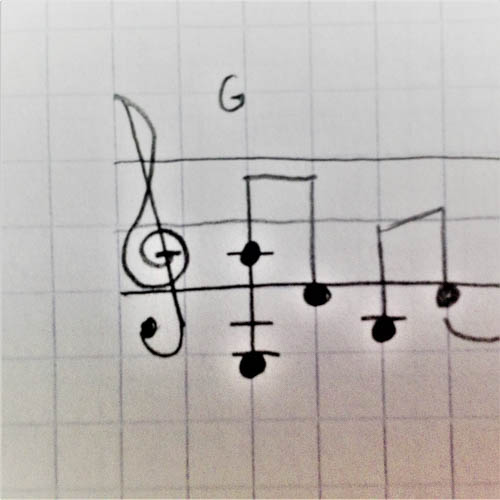
About note durations: I like to allow eight squares’ worth of horizontal space for whole notes, four for half notes, two for quarter notes, one for eighth notes, and so on. Here, have that in a graphic:
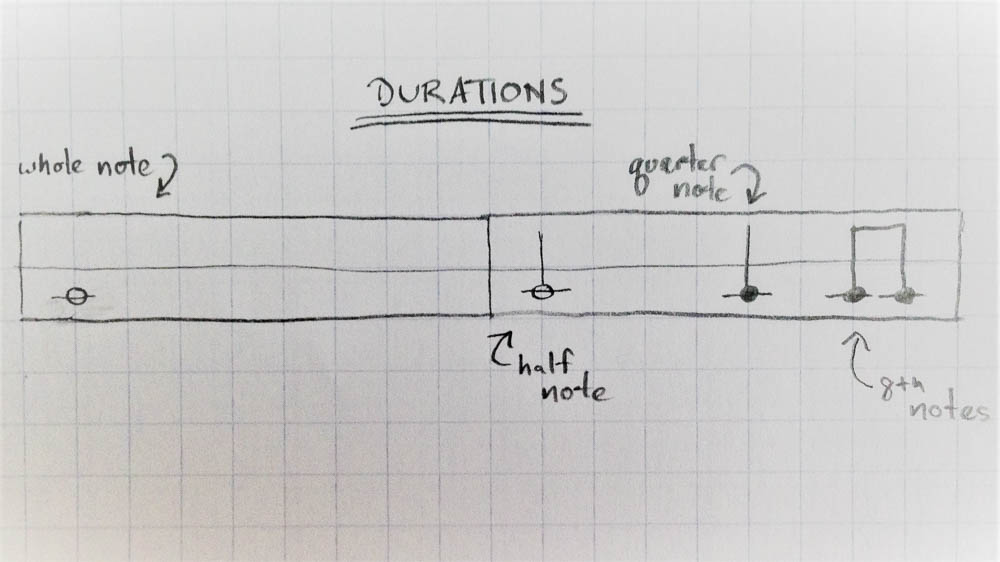
It doesn’t have to look like published, perfectly printed sheet music. Just scrawl out notes and try to make them legible.
I space leger lines out evenly, two lines per square, like this:
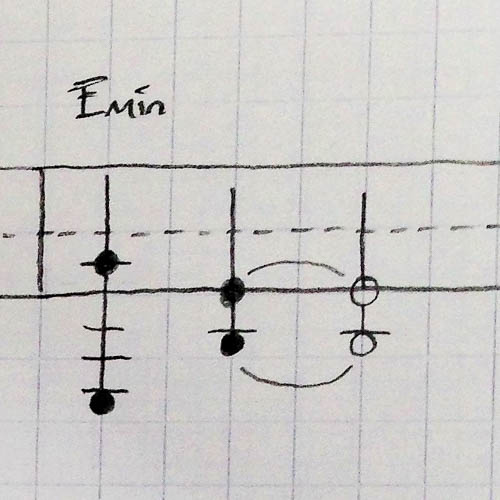
Uses and Limitations
Like anything in songwriting, this takes practice. It gets faster and more accurate the more you do it.
The minimalist staff works best for simple melodies that use simple note values no faster than a 16th note. This method probably isn’t ideal if you need to notate 32nd notes or faster.
This is a good method for notating short sections of about 8-12 measures. It’s very focused and zoomed-in on short sections, since only a few measures fit on one page. It won’t solve every musical situation, but it’s another tool for your toolbox — and a fun little craft project.
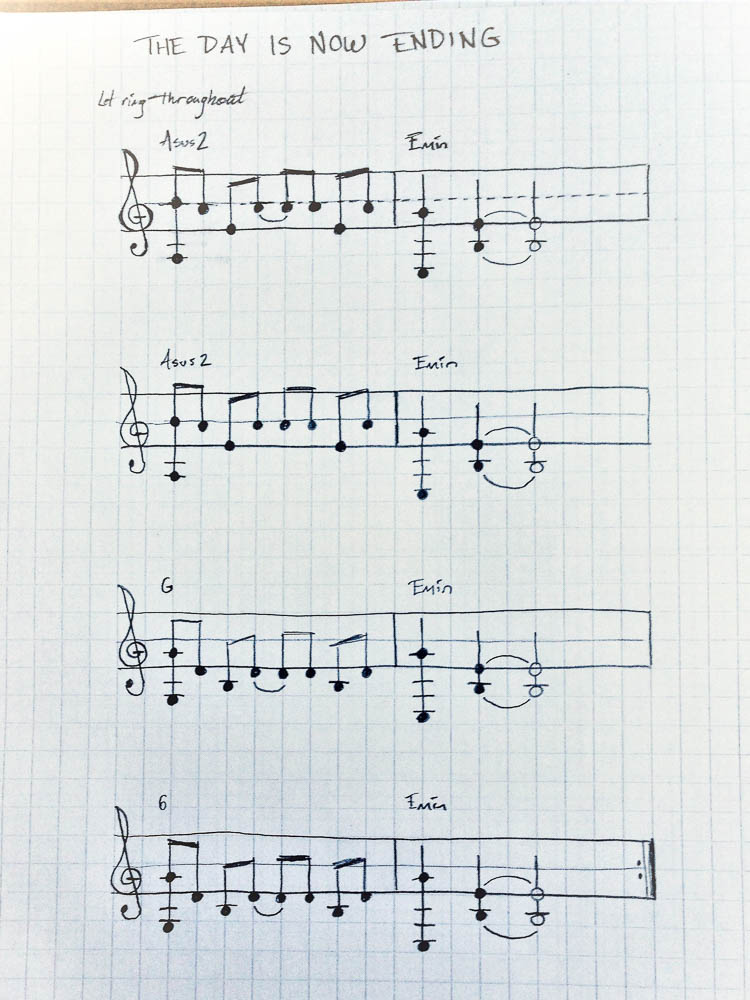
This method is good in a pinch, and good for private studies — but you’ll need proper staff paper for sight reading and performance. I showed my staves proudly to a friend of mine who writes songs, sings, and plays violin. She said: “If you handed me this to sight read, I’d be pissed.”
[^1] Or 7.6×12.7cm.